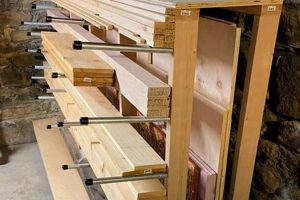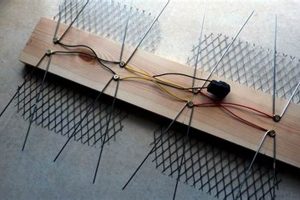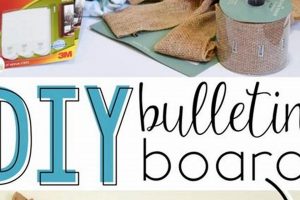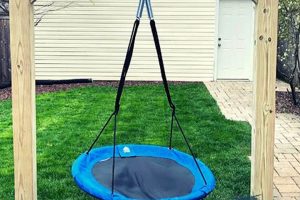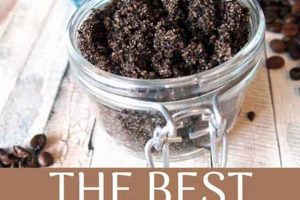Creating a wedding floral arrangement independently involves the selection, arrangement, and securing of flowers and greenery to form a decorative cluster intended for use by the bride during the wedding ceremony. This self-directed approach allows for personalization and potential cost savings compared to engaging a professional florist.
Undertaking this project provides significant advantages, including budgetary control, the opportunity to incorporate meaningful floral varieties, and the satisfaction of contributing a personal touch to the wedding day. Historically, floral adornments have symbolized fertility, new beginnings, and happiness, and crafting them oneself can deepen this symbolism.
The subsequent sections will detail the necessary materials, provide step-by-step instructions for various design styles, and offer guidance on flower selection and preservation techniques, enabling the successful completion of this creative endeavor.
Crafting Your Own Wedding Floral Arrangement
The following recommendations aim to optimize the outcome of creating a personal wedding floral arrangement, addressing critical areas for consideration.
Tip 1: Flower Selection Timing: Secure floral selections well in advance of the wedding date. Seasonal availability impacts pricing and choice. Out-of-season requests may incur substantial costs or be impossible to fulfill.
Tip 2: Hydration is Paramount: Upon receipt, immediately hydrate cut flowers. Recut stems at a 45-degree angle under running water and place them in a clean vase with floral preservative. This maximizes water uptake and extends vase life.
Tip 3: Design Planning Prior to Assembly: Sketch or map the desired arrangement beforehand. This blueprint aids in visualizing the final product and ensures adequate quantities of each floral component are acquired.
Tip 4: Secure and Concealed Binding: Utilize floral tape to bind stems tightly together. Subsequently, conceal the tape with ribbon or fabric wrap, ensuring a professional and aesthetically pleasing appearance.
Tip 5: Stem Length Management: Maintain consistent stem lengths within the handle for comfortable holding. Uneven lengths can cause discomfort and instability during use.
Tip 6: Preservation Techniques: Employ a floral sealant spray after completion. This helps minimize moisture loss and maintain the arrangement’s freshness throughout the wedding day. Refrigeration (if space allows) is also beneficial.
Tip 7: Practice Makes Perfect: Conduct a trial run of the arrangement several weeks before the wedding. This allows for identification and correction of design flaws or unforeseen challenges, mitigating potential errors on the critical day.
Adhering to these guidelines will promote the creation of a visually appealing and enduring wedding floral arrangement, aligning with the desired aesthetic and contributing to a memorable occasion.
The final section of this article will address common pitfalls and troubleshooting techniques.
1. Flower Selection
Flower selection constitutes a foundational element within the framework of independent bridal floral arrangement creation. The chosen floral varieties directly influence the aesthetic appeal, cost, and longevity of the finished product. Ill-considered choices can result in a visually incongruent arrangement or one that wilts prematurely, diminishing its intended impact. For example, selecting delicate blooms such as gardenias for an outdoor summer wedding, without accounting for their susceptibility to heat, will likely lead to disappointment.
The correlation between appropriate flower selection and a successful outcome is evident in several practical aspects. Seasonality dictates availability and pricing; utilizing in-season flowers often proves more economical and ensures optimal freshness. Understanding the symbolism associated with specific flowers allows for personalization, incorporating elements that reflect the bride’s preferences or convey particular sentiments. Furthermore, knowledge of floral characteristics, such as stem strength and water requirements, is critical for maintaining structural integrity and prolonging the arrangement’s lifespan. Consider the contrasting longevity of orchids versus hydrangeas, illustrating the need for informed decisions based on specific requirements.
In summary, mindful flower selection is not merely a preliminary step but an integral component of the entire “bridal bouquet diy” process. Its impact reverberates through every stage, from initial design to final presentation. Challenges such as sourcing specific varieties or navigating unexpected price fluctuations require adaptability and research. Ultimately, a comprehensive understanding of floral characteristics and availability ensures the creation of a bridal floral arrangement that is both visually appealing and enduring, contributing significantly to the overall wedding aesthetic.
2. Color Harmony
Color harmony, in the context of a self-assembled wedding floral arrangement, directly influences the aesthetic impact and overall visual success of the final product. The selection and arrangement of floral elements based on color theory principles either enhances the arrangement’s visual appeal or detracts from it. A lack of cohesive color strategy can result in a jarring or visually unappealing composition, negating the benefits of other well-executed aspects of the design. For instance, a combination of clashing vibrant hues without strategic balance may overwhelm the viewer, whereas a thoughtfully curated palette of complementary colors creates a sense of unity and sophistication.
Effective color harmony contributes significantly to the overall theme and style of the wedding. A monochromatic scheme, employing various shades of a single color, can evoke a sense of elegance and refinement. Analogous color schemes, using colors adjacent to each other on the color wheel, often create a harmonious and natural feel. Conversely, a complementary color scheme, utilizing colors opposite each other, can generate visual interest and contrast. Real-world examples demonstrate these effects: a bouquet dominated by pastel pinks and creams conveys a soft, romantic aesthetic, while a bouquet featuring deep purples and vibrant yellows creates a more dramatic and contemporary statement. Furthermore, the interplay of color with the bride’s attire and the wedding venue significantly amplifies the impact. A mismatched color palette can undermine the cohesion of the entire event.
In conclusion, the deliberate application of color theory principles is paramount to achieving a visually pleasing and impactful self-made bridal floral arrangement. Overlooking color harmony can compromise the entire visual presentation, regardless of other design elements. While personal preferences play a role, a foundational understanding of color relationshi
ps and their effects is indispensable for a successful outcome, ensuring that the arrangement complements the overall aesthetic of the wedding. Adhering to these concepts presents a notable challenge but creates a worthwhile contribution to the overall appearance.
3. Stem Wrapping
Stem wrapping, within the context of independently crafting a wedding floral arrangement, serves a critical structural and aesthetic function. The practice involves securing and concealing the exposed stems of the floral arrangement, creating a handle for the bride to hold. Inadequate stem wrapping compromises the stability and visual appeal of the final product. For instance, a poorly wrapped handle may unravel during the ceremony, causing the flowers to become dislodged or the bride to experience discomfort. The absence of proper wrapping also exposes the raw stems, detracting from the overall polished aesthetic.
Effective stem wrapping employs specific techniques and materials to ensure both durability and visual appeal. Floral tape is typically used to bind the stems tightly together, providing a secure foundation. This tape is then concealed with ribbon, fabric, or other decorative materials, transforming the functional element into a visually harmonious component of the arrangement. Consider a bouquet where the stems are wrapped in satin ribbon that complements the color scheme of the wedding, adding an element of sophistication. Conversely, a bouquet with exposed floral tape presents an unfinished and unprofessional appearance. The selection of wrapping material and its application directly impact the comfort of handling the arrangement, preventing skin irritation from direct contact with sap or thorns.
In conclusion, stem wrapping is not merely an ancillary step in the construction of a wedding floral arrangement; it is an essential process that affects structural integrity, aesthetic presentation, and user comfort. Neglecting this aspect can undermine the overall quality of the bouquet. A careful application of wrapping techniques and appropriate material choices contributes significantly to a polished and enduring final product, aligning with the desired elegance of the wedding occasion.
4. Design Stability
Design stability, within the context of independently constructing a bridal floral arrangement, represents a critical attribute that ensures the arrangement maintains its intended form and structural integrity throughout the wedding day. It encompasses a complex interplay of factors, each contributing to the bouquet’s ability to withstand handling and environmental stressors.
- Secure Stem Binding
The method of securing flower stems is paramount. Floral tape, when properly applied, creates a robust foundation. Alternatives, such as wire, may offer enhanced stability for heavier arrangements. Insufficient binding leads to stem slippage and a compromised design. For example, a large bouquet of hydrangeas, inadequately bound, is prone to collapsing under its weight.
- Center of Gravity Management
Arrangements with an uneven distribution of weight are susceptible to tipping. The center of gravity must be carefully considered during construction. Heavier floral elements should be positioned closer to the center of the arrangement to maintain balance. A cascading design, if not properly balanced, risks becoming unwieldy and unstable.
- Floral Foam Utilization (Optional)
While not always necessary, floral foam provides additional support and hydration for certain designs. It is particularly useful for arrangements with a defined shape or those requiring precise floral placement. Improperly soaked or insufficient foam compromises the arrangement’s longevity and structural integrity. Arrangements designed for placement in a vase can benefit from foam stability.
- Environmental Considerations
External factors, such as temperature and humidity, impact design stability. Deliberate floral selection, taking into account a given environment (such as an outdoor setting in hot weather), is necessary. Employing floral sealant sprays reduces moisture loss and helps to maintain floral rigidity. Failure to account for environmental conditions may result in premature wilting and structural collapse.
The preceding facets highlight the intricate relationship between design stability and the successful creation of a self-made bridal floral arrangement. Neglecting these considerations jeopardizes the arrangement’s longevity and visual appeal, potentially detracting from the overall wedding aesthetic. Prioritizing structural integrity ensures a lasting and visually pleasing bridal accessory.
5. Budget Allocation
Within the context of a self-directed wedding floral arrangement, budget allocation exerts a substantial influence on the final outcome. The resources earmarked for this aspect directly correlate with the quality and quantity of materials, influencing the overall aesthetic and potential longevity of the arrangement. Insufficient budgetary planning invariably limits floral choices, potentially necessitating compromises on preferred varieties or quantities. For example, assigning a minimal budget may preclude the inclusion of premium, out-of-season blooms, forcing reliance on less expensive, readily available alternatives. This shift can significantly alter the intended visual impact. The financial parameters also affect accessory selections, such as ribbons, embellishments, and vases, further impacting the overall design.
Prudent budget allocation necessitates a comprehensive understanding of floral costs, supply expenses, and contingency reserves. Researching average prices for desired flowers, factoring in seasonal fluctuations, and comparing supplier quotes are essential steps. Allocating funds for essential tools, such as floral shears, tape, and wire, prevents unexpected expenses during the crafting process. A contingency fund addresses unforeseen cost overruns, such as damage to floral materials or the need for replacement components. Real-world scenarios underscore the practical significance of detailed budgeting; a bride who meticulously tracks her floral expenses can proactively identify areas for cost savings or justify investments in higher-quality materials, ensuring a more satisfactory result. Additionally, a clear budget facilitates informed decision-making throughout the entire process, preventing impulsive purchases that may strain financial resources.
Effective budget allocation represents a foundational element for a successful independent wedding floral arrangement. Insufficient planning directly impacts the quality and design of the arrangement, while meticulous management empowers informed decisions and cost-effective resource utilization. Addressing challenges related to material costs, unexpected expenses, and compromise solutions enables the achievement of a desirable final product that aligns with pre-established financial constraints. Prioritizing budget consciousness, therefore, significantly contributes to the achievement of an aesthetically pleasing and financially responsible bridal floral solution.
6. Timing Considerations
The timeframe surrounding the creation of a self-assembled wedding floral arrangement is a critical determinant of its ultimate success. Adequate planning and adherence to a strict schedule influence floral freshness, design execution, and overall stress management. Insufficient time allocation often results in compromised floral quality, rushed assembly, and increased likelihood of errors. A bride attempting to assemble an elaborate arrangement the day before the wedding, for example, risks using wilted or damaged flowers and experiencing undue stress, ultimately diminishing the final product’s aesthetic appeal.
Proper timing encompasses multiple phases: flower procurement, preparation, assembly, and preservation. Securing floral selections weeks or months in advance allows for sourcing specific varieties and capitalizing on seasonal availability. Immediate hydration upon receipt, followed by a period of conditioning, maximizes floral longevity. Allocating sufficient time for assembly, ideally several days before the event, enables meticulous design execution and reduces the potential for last-minute errors. Preservation techniques, such as refrigeration and sealant application, further extend the arrangement’s lifespan, ensuring its presentability on the wedding day. A timeline encompassing these steps, with built-in buffers for unforeseen delays, mitigates risks and promotes a more controlled and successful outcome. The consequences of delaying any of these phases are significant. Procrastination in purchasing flowers might restrict choice. Rushing the assembly will result in errors. Neglecting Preservation will cause wilting flowers.
In conclusion, thoughtful timing considerations are indispensable for any wedding floral project. Neglecting this dimension can jeopardize floral quality, design execution, and the overall sense of accomplishment in “bridal bouquet diy”. Adhering to a meticulous timeline promotes a more stress-free and visually appealing outcome, aligning the self-made arrangement with the desired aesthetic and contributing to a memorable occasion. Challenges related to the short-notice acquisition of supplies can be mitigated by thorough preparation and a well-defined schedule, ensuring that the “bridal bouquet diy” is not negatively affected by any time constraints.
Frequently Asked Questions
The following addresses common inquiries and misconceptions surrounding the practice of independently creating a wedding floral arrangement.
Question 1: What is the optimal timeframe for assembling a bridal floral arrangement?
Arrangement construction should ideally occur one to two days prior to the wedding. This balances the need for floral freshness with sufficient time for meticulous assembly and any necessary adjustments.
Question 2: Are there specific flower types ill-suited for independent arrangement due to their fragility?
Certain delicate blooms, such as gardenias or stephanotis, are inherently challenging due to their sensitivity to handling and environmental conditions. Alternative, more robust varieties should be considered for novice arrangers.
Question 3: What precautions should be taken to prevent premature wilting, especially during warmer months?
Hydration is paramount. Upon receipt, stems should be recut and placed in water treated with floral preservative. A floral sealant spray can minimize moisture loss. Refrigeration, if available, provides additional protection.
Question 4: Is prior floral design experience a prerequisite for undertaking this endeavor?
While professional experience is not mandatory, familiarity with basic floral design principles, such as color theory and structural balance, is highly beneficial. Practice arrangements are strongly recommended.
Question 5: What is the recommended method for transporting the finished arrangement to the wedding venue?
A secure container, such as a vase or a specialized floral transport box, is essential. Padding should be used to prevent movement and potential damage during transit. Temperature control is also crucial.
Question 6: What are the potential cost savings associated with self-assembly compared to engaging a professional florist?
Savings vary significantly depending on floral selections, arrangement complexity, and geographic location. Independent creation can offer substantial cost reductions, but meticulous budgeting and resource management are critical.
Understanding these nuances contributes to a more informed and successful undertaking. Prior planning and careful execution are key factors.
The concluding section will provide a brief summary and final recommendations.
Concluding Remarks on Bridal Bouquet DIY
The preceding exploration of bridal bouquet diy has illuminated critical considerations for independent creation. From flower selection and color harmony to design stability and budget allocation, each element demands meticulous attention. The timing and environmental factors further contribute to the complexity of this undertaking, reinforcing the necessity for careful planning and execution.
Success in crafting a wedding floral arrangement independently requires not only artistic vision but also a comprehensive understanding of horticultural principles and practical techniques. Therefore, prospective creators should approach this endeavor with a balanced perspective, acknowledging both the potential rewards and inherent challenges. Only through diligent preparation and informed decision-making can the aspiration of a personalized, cost-effective bridal bouquet be successfully realized.



